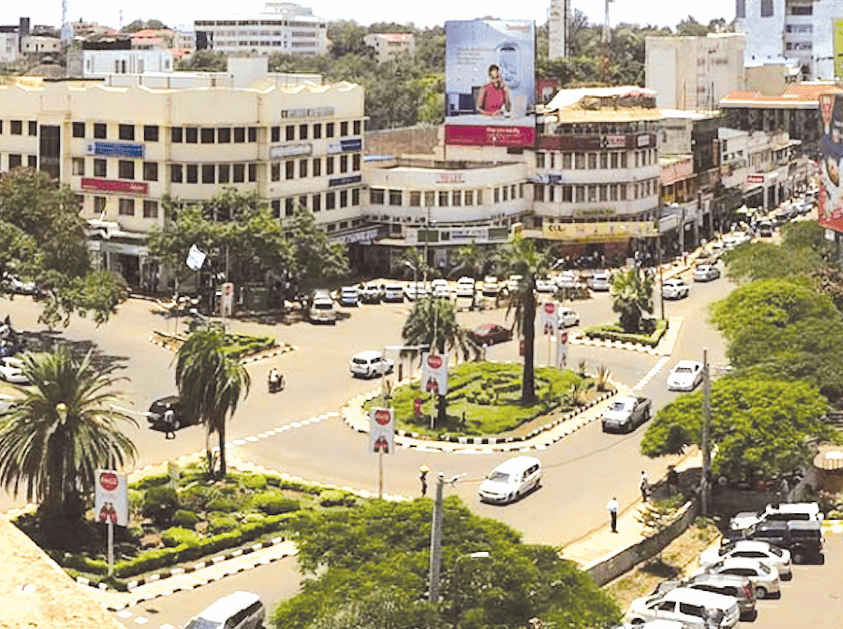Ruiru overtakes country’s major towns populations
By Samuel Kariuki, August 1, 2024The rapidly developing Ruiru has overtaken the country’s major towns in Kenya in population growth.
Currently, it is ranked fourth in the list of most populous urban centres in Kenya, behind Nairobi, Mombasa and Nakuru only, according to statistics from the National Council for Population and Development (NCPD).
The ranking places it well ahead of some of the country’s major towns like Eldoret, Kisumu, Kakamega, Machakos, Embu, Meru, Nyeri, Kiambu, Bungoma, and Kisii, among others.
According to the statistics, Ruiru hosts the largest population within the Central region with an estimated 600,000 people.
“Nairobi City hosts the highest proportion (29.6 per cent) of the total urban population followed by Mombasa (8.1per cent), Nakuru (3.8 per cent), Ruiru (3.8 per cent), Eldoret (3.3per cent), Kisumu (2.7 per cent) and Kikuyu (2.2 per cent),” Sessional Paper No. 1 of 2023 on Kenya National Population Policy for Sustainable Development stated.
Business centre
The findings further places Ruiru far ahead of major towns in the Coast known for tourism attraction, those in Rift Valley and Western regarded as agricultural hubs, those in Nyanza majorly due to fishing activities, Eastern and North Eastern region which are majorly business centres.
The sessional paper which was published by the NCPD revealed that the Kenya’s total urban population has been growing steadily from about one million in 1969 representing 9.8 percent of the total population to 14.8 million in 2019, which is 31.2 percent of the total population.
Consequently, the number of urban centres increased from 47 in 1969 to 372 in 2019 despite the fact that overall urban population growth has dropped significantly from 8.3 percent in 2009 to 2.1 percent in 2019.
“Urban centres bordering large cities are merging to form metropolitan cities. More than half of the total urban population, about 56 per cent resides in informal settlements. It is estimated that over 70 per cent of the population in Nairobi lives in informal settlements,” NCPD said.
Close to Nairobi
Ruiru which is currently a constituency, is located 26km from Nairobi CBD where a sizable of its residents who are either tenants or land owners work.
Efforts to split the constituency have remained a mirage as the residents scramble for the meager share of resources from the national and county government which are hardly enough to render services to the populations.
It measures 292 square kilometres and entails some of the most populated areas including Ruiru town, Kahawa Wendani, Kahawa Sukari and Mwihoko.
The area hosts three campuses of major universities including Jomo Kenyatta University of Agriculture and Technology, Kenyatta University and Zetech as well as other colleges whose students have contributed to the surge in population.
Notably, landlords in the area offer a blend of housing options including hostels, low price rentals and high end residentials making it a favourable destination for everyone on the economic pyramid.
About two decades ago, eastern Ruiru was dotted by coffee farms before it was eventually converted into settlements after prices of the cash crop dipped and the demand for housing increased
Meanwhile, NCPD maintained that rural-urban migration has been the biggest feeder of towns with people, though with the advent of devolution, reverse migration has been witnessed as people move from major urban centres to rural upcoming centres.
The move has been attributed to the high cost of living in big urban centres compared to rural towns which also present diverse income generating opportunities. According to the sessional paper, in 2019, Nairobi, Kiambu, Mombasa and Kajiado were the receiving counties, highest net gainers of lifetime migrants while Kisii, Kakamega, Murang’a and Vihiga were the sending counties, the highest net loss, of lifetime migrants.
